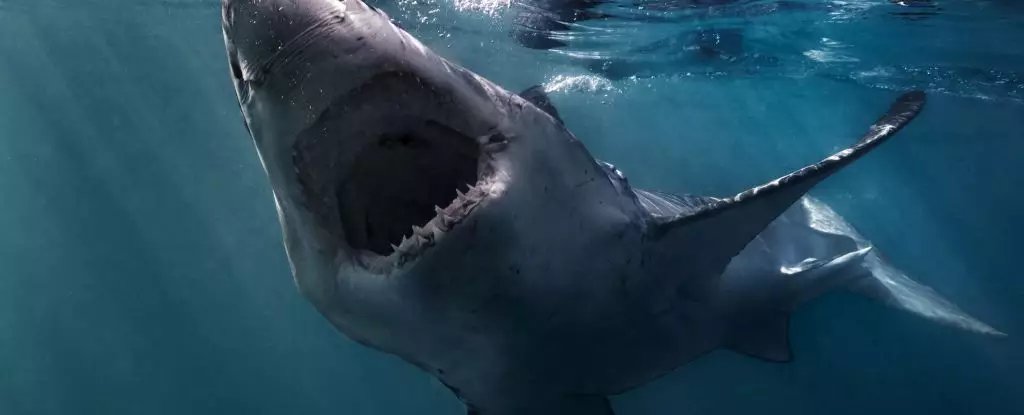In the waters of Bermuda, a pregnant porbeagle shark met a tragic fate as she was slayed and devoured by a larger shark. This disturbing incident was brought to light through the use of a satellite tag that the pregnant porbeagle had been equipped with. Marine biologist Brooke Anderson from Arizona State University expressed her disbelief upon receiving the data from the satellite tag, which pointed towards a grim conclusion – the pregnant female porbeagle had fallen victim to a larger predator. This discovery sheds light on the realities of shark-on-shark predation, a phenomenon that is rarely observed in the wild.
Porbeagle sharks, scientifically known as Lamna nasus, are large mackerel sharks that are facing a worrying decline in their population numbers. These sharks are heavily targeted in both recreational and commercial fishing activities, making them particularly vulnerable to extinction. Females do not reach reproductive age until around 13 years old, and they have small litters of pups every year or two. This slow reproductive cycle, coupled with the threats posed by human activities, puts the species at risk of population decline. Understanding the behaviors and movements of these sharks is crucial for implementing conservation measures to protect them from further harm.
To monitor the movements and behaviors of porbeagle sharks, researchers like Anderson have been using satellite tags that provide valuable data about their activities. The pop-off tags used in this study record information such as temperature, water depth, and location for a period of time before detaching from the shark and transmitting the stored data to scientists. In addition, fin-mounted tags provide more accurate location data when the shark’s fin breaches the water’s surface. These advanced technologies have revolutionized the way researchers study marine species, allowing them to uncover previously unknown behaviors and interactions.
Implications for Conservation
The discovery of shark-on-shark predation among porbeagle sharks has significant implications for their conservation. The loss of a pregnant female porbeagle, along with the unborn pups, highlights the vulnerability of this species to predation and other threats. This incident underscores the importance of further research to better understand the behaviors and movements of porbeagle sharks, as well as other large shark species. By tagging more sharks and monitoring their activities, researchers can gain valuable insights into the factors that influence their survival and population dynamics.
Moving forward, it is crucial to continue studying the behaviors of porbeagle sharks and other large shark species to uncover the mysteries of the open ocean. The development of satellite tagging technologies has enabled researchers to track and monitor these highly mobile predators, shedding light on their unique behaviors and interactions. By expanding their research efforts to include more sharks and other marine species, scientists can deepen their understanding of the challenges these animals face in their natural environments. Through collaborative efforts and innovative technologies, we can work towards ensuring the long-term survival of vulnerable shark populations.

Leave a Reply